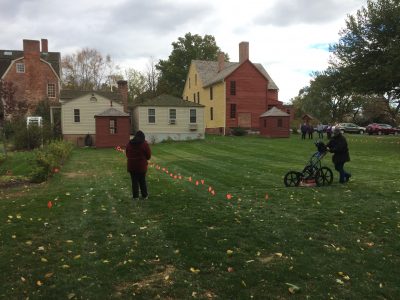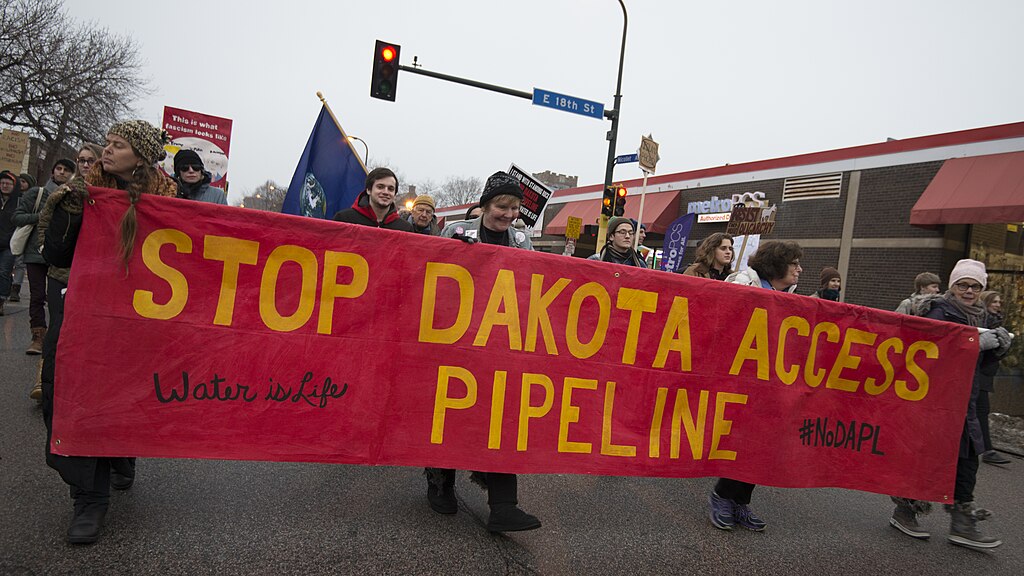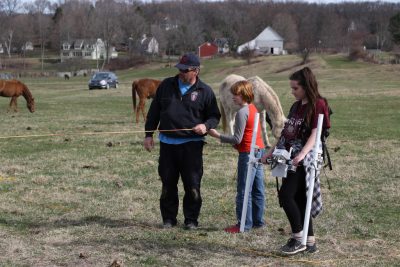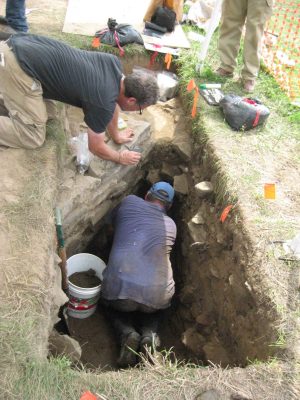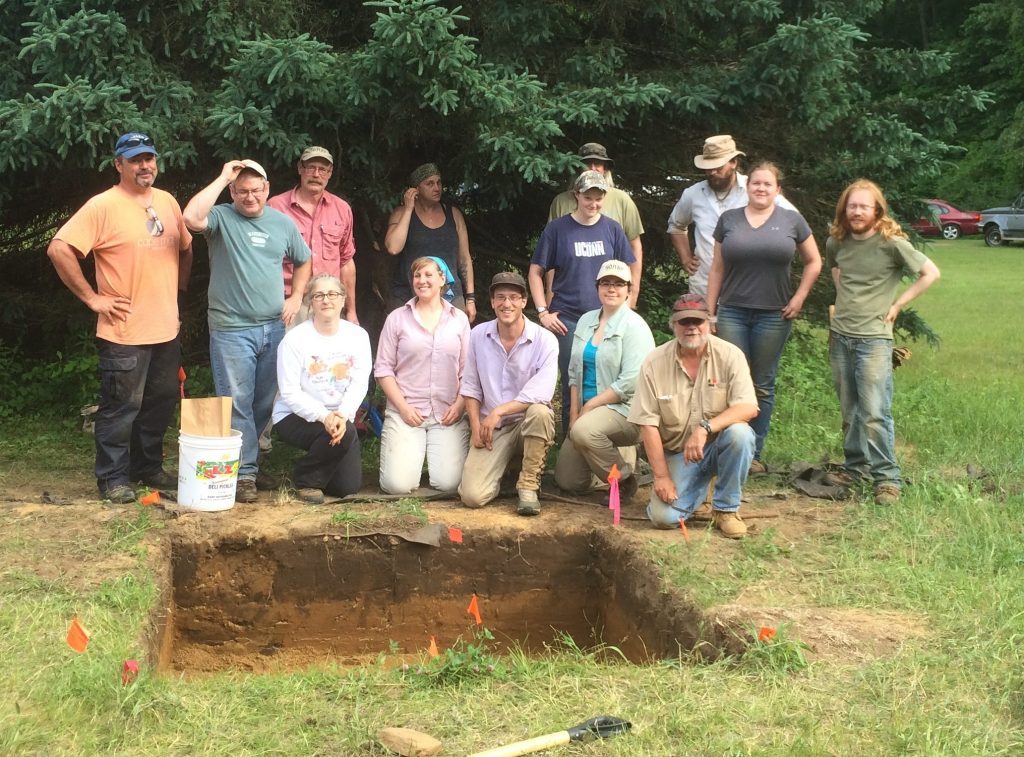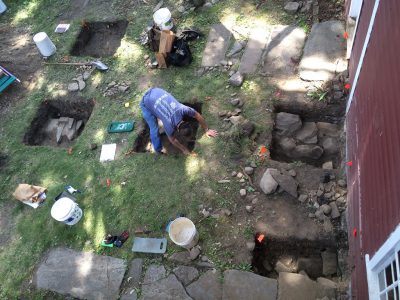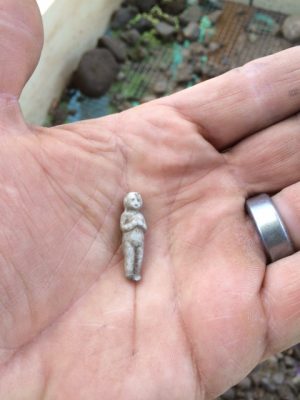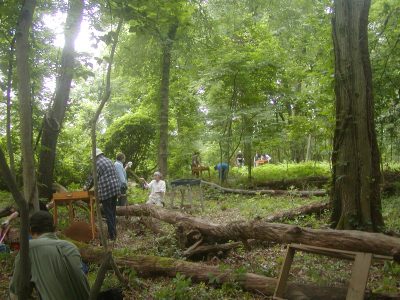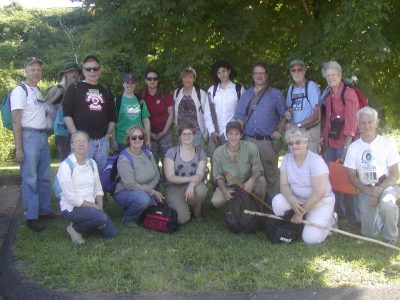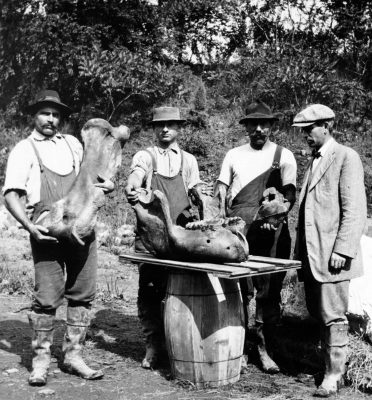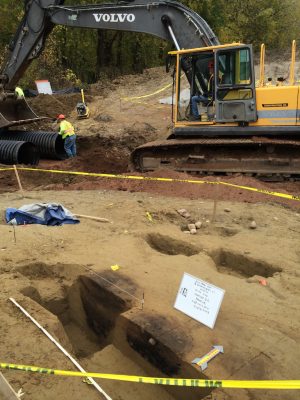New OSA lab
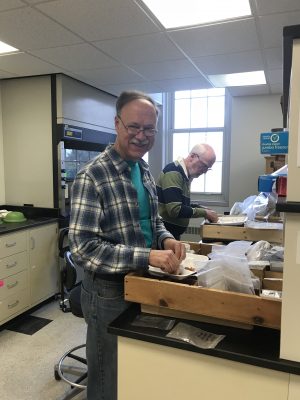
Lee and Dick prepping artifacts in the new lab in Beach Hall.
Data entry
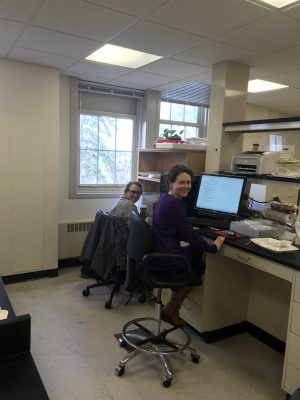
Lab RA Brianna Rae and senior Caitlin Kingston working in the new lab.
FOSA Newsletter, Fall 2017
UConn is back in session and there have been a number of very recent and exciting changes for the Office of State Archaeology. I have been assigned a new office in Beach Hall, and people can now find me in Beach 301 just down the hall from Kevin McBride’s New World Archaeology lab and across from Dan Adler’s Old World Paleolithic lab. It’s nice to finally be back in familiar company and out of the Math Department. In addition to the office, I have at least temporary use of the adjacent lab in Beach 305. As I write this, I’m still waiting for final permission to set up shop, but the new lab space is a huge step forward for OSA. There are six bench top areas and work stations, two sinks, a fume hood, and plenty of other table space and shelving. My goal is to get all of the summer’s archaeological materials moved there and get to work on artifact washing and inventory work as soon as possible. The CT State Site files are already in my office, and soon I hope to get all of the CRM reports located there as well so that all of the records are finally joined in one location for those who need to do background research for projects. Anthropology has requested space for a map and records room and even a field equipment room in addition to the office and lab space for OSA. These additional spaces have not yet come into discussion, but I’m keeping my fingers crossed since there is plenty of new space available now that molecular and cell biology has moved to a new building. Once we are ready to start the move from Horsebarn Hill Building 5, I’ll let folks know. There will be plenty of opportunity to help out soon!
This was also a busy summer for OSA and FOSA volunteers. We first helped Ingrid Wood, Columbia’s Town Historian by exploring foundation ruins thought to be associated with the Little family, some of the town’s earliest settlers. Ingrid organized a terrific public outreach dig focused on a sixth grade audience, as well as a number of local teachers. It was a pleasure to work with her and the kids, and a big thanks to all who were able to help out.
The Connecticut State Museum of Natural History and OSA ran their second Archaeology Field School for Educators. This year the program grew and we had a great bunch of participants, some of whom would like to run archaeology programs of their own now that they have some experience. This year we followed up on Robert Gradie’s 1990 and 1991 investigations of the Oliver Ellsworth National Historic Landmark homestead. We were successful at locating a large 17th Century cellar feature (with the help of Debbie Surabian’s radar) and we have an excellent sample of artifacts to examine this winter. A number of FOSA members were able to act as mentors during the program, and special thanks go out to Lori Kessel, Mike Cahill, Scott Brady and Fiona Jones. Jim Trocchi, Lee West and Dick Hughes also helped during week two, our public drop-in week. The award for hardest working volunteer has to go to Dick, who single handedly completed most of the backfilling of our deep excavation areas on the final day – what a guy!
August was our chance to get back to the John Hollister site. This year’s Connecticut State Museum of Natural History Adult Archaeology Field School filled up, so there was plenty of opportunity for FOSA volunteer mentoring. During the week of field school we looked for features that might help us to interpret the architecture of the site. In addition to some 20th Century tobacco shed footings, we did document about a dozen other large pit features that may be associated with framing timbers from an earth-fast house at the site.
The second week at the John Hollister site was our third annual FOSA Field School, and we had a great turnout, including some new members from the earlier summer field schools. That week we focused on the new fifth cellar and one of the three possible wigwam features near it. Both features produced artifacts contemporary with the core residential area of the site. While it remains unclear if this is actually the occupation are of one or more Wangunk families that might have worked for the Hollisters, we did find two wampum beads and a very interesting, possibly French made pipe that probably had its origins at Fort Pentagoet about 350 miles to the northeast in Maine’s Penobscot Bay. The French military outpost of Pentagoet has produced the largest number of these pipes and they do not yet appear to have been documented in southern New England or New York. Speculating how this King Philips War-era pipe got to Glastonbury is likely to keep us preoccupied for a while.
In sum, it was a busy summer and we have lots of lab work ahead of us. Keep your ears open regarding lab work opportunities in Beach Hall soon. It is hard to express how satisfied and grateful I am to have a clean, modern lab space made available. I think it is a sign of good things to come!

